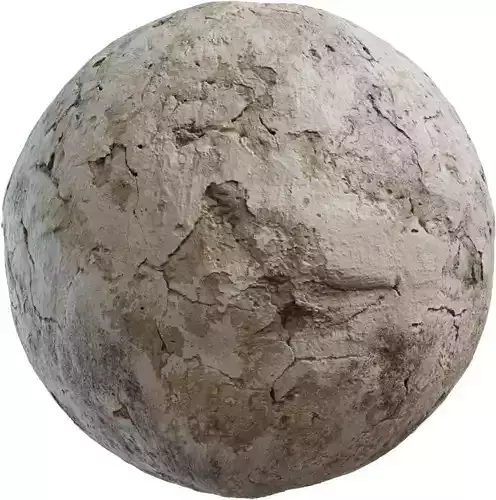1/3
This production‑ready PBR material recreates a heavily weathered plaster or painted wall with organic branching cracks, scattered stains, and patches of exposed substrate, perfect for abandoned interiors, post‑apocalyptic scenes, and cinematic storytelling requiring authentic decay. The 4K seamless set balances dramatic mid‑frequency cracking with subtle color variation and fine grain, ensuring walls read convincingly from wide shots through to detail closeups without noisy repetition. Calibrated normal and height maps deliver believable depth for the crack fissures and edge lips, while tuned roughness provides varied response—matte on intact plaster, slightly chalky in damaged zones—across Blender, V‑Ray/Corona, Unreal, and Unity.
What's included
Maps: BaseColor (Albedo), Normal (OpenGL), Roughness, Ambient Occlusion, Height/Displacement; seamless 4096×4096 PNGs for clean tiling and grading flexibility.
Scale: authored to ~1×1 m tile with cracks at realistic scales for structural damage; rotate/offset UVs to vary crack patterns on large walls.
Compatibility: Blender/Cycles & Eevee, 3ds Max (V‑Ray/Corona), Maya (Arnold), C4D (Octane/Redshift), Unreal Engine, Unity HDRP/URP with parallax/displacement.
Uses: abandoned buildings, dystopian interiors, historical ruins, horror sets, urban decay levels, and product backdrops needing dramatic weathering narrative.
Author notes
Height calibrated for moderate crack depth; use displacement or parallax sparingly to keep fissures natural without over‑exaggerating lips.
BaseColor is lighting‑neutral; separate AO enhances crack shadowing; consider adding water stain decals or mold overlays to break repetition further.
Previews include sphere and plane renders demonstrating crack distribution, tiling cleanliness, and surface breakup under directional lighting.
REVIEWS & COMMENTS
accuracy, and usability.



